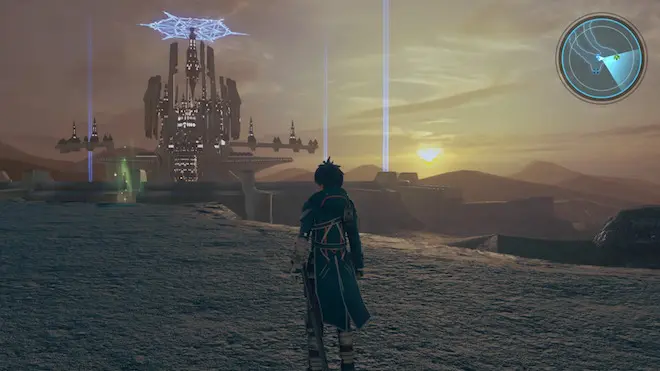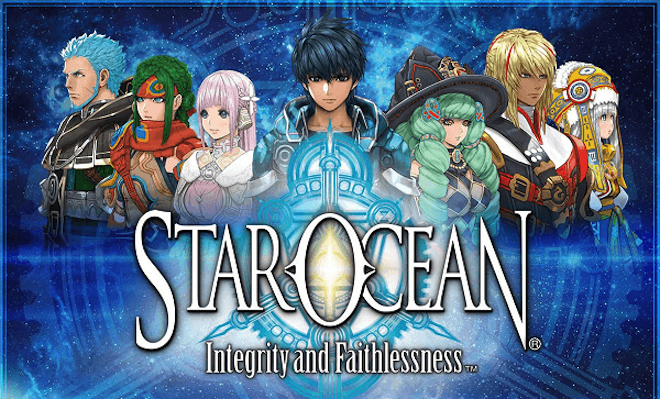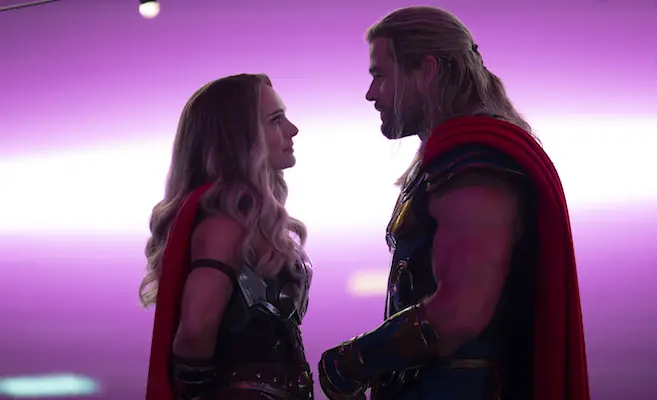Japanese Role Playing Games (JRPGs) have their place in not only gaming history, but in the current state of gaming. There are certain tropes that define what a JRPG is in terms of gameplay, story, music and the like. One of the most storied JRPG franchises, Star Ocean, embodies all that is a JRPG while borrowing from many different genres for the basis of their stories. In the latest, Star Ocean: Integrity and Faithlessness, out now for the PS4, Square Enix and developer tri-Ace have created a lovely reminder of what makes JRPGs beloved in the first place, by creating a definitive throw back to a time before western RPGs, like Skyrim and The Witcher redefined the genre.
The beauty in Star Ocean: Integrity and Faithlessness is that it doesn’t try to be more than what it is. And because of that, the story settles nicely between the second and third games of the franchise. To put that into perspective, Star Ocean 2: The Second Story came out originally in 1999 in North America — the first Star Ocean game for us over here — on the original Playstation, and the third game, Star Ocean: Till The End Of Time came out in 2004 for the Playstation 2.
The story of Star Ocean: Integrity and Faithlessness is decidedly Japanese, with a young boy destined for more and his female childhood friend who longs for more than friendship; a child with powers that can be used to rule the galaxy; a cocksure pilot and his second-in-command who adores him and will fight beside him now and forever; a sultry magic user wearing an outfit that defies all known laws of science; and a noble swordsman, fighting because it’s what his master would have done. These character traits have been done so much in not only JRPGs, but in many forms of Japanese entertainment, especially after World War II. So much so that George Lucas even riffed on a few for his silly little space opera in 1977.
Star Ocean: Integrity and Faithlessness relies heavily on those anime-inspired, Japanese tropes, but it really separates itself in the game play. SO:IF uses action-based combat, and then amps that up by giving the player seven different characters to use. Switching between characters is done simply with the control pad, and each character has a different specialization. Getting all seven lined up for devastating attacks is a true sight to behold, but it is difficult. You can go through the entire game only using the short and long, mid- and heavy attacks over and over (trust me, I did it).
The player assigns roles and skills to each character, and this acts like a gambit system, as the AI controls the other six characters. There were times when I had to switch out of my main character, as I needed specific healing or to raise a dead member, and I couldn’t wait for the AI to realize it needed to be done. The fact that I do could do that during a battle, and not miss a beat speaks to the depth of the battle system here.
The story centers on a young man named Fidel, and his female friend, Miki, who get sucked into a war between two nations-states on the planet of Faykreed IV. When a ship crash lands on this backwater world, and a young girl with incredible powers appears, Fidel’s life changes forever, and suddenly the conflict between two nations takes a back seat to a war happening across the stars. Even with all the tired cliches, I still found great joy here in Star Ocean: Integrity and Faithlessness. To me, this was a throwback to a time when RPGs meant grinding for levels, character management, item creation, and some groan-inducing writing. While many might think this is a bad thing, it’s really what defines the genre, and because of this, SO:IF shines. This is a JRPG through and through, and it doesn’t pretend to be anything more. My first play-through took close to 30 hours (I did not complete 100% of the side quests, only finishing 64% of them) and I left so much on the table, including different endings. Yes, there are multiple endings here.
Fully CG cutscenes have essentially been taken out for a more uninterrupted game flow. Even in scenes when a cutscene would be welcome, like, say, an epic space battle between whole fleets, the action takes place solely on the bridge of your ship, the Charles D. Goale, with the characters essentially explaining what is happening and leaving it all up to the imagination of the player. While I respect this decision, I kind of wished that I could have seen the battle, especially after all that happens (I won’t spoil it, but it is very Star Trek-esque). After awhile, I got used to it, and it didn’t bother me, as the scenes still moved the story forward, and that was the important part.
All of the main characters are fully voiced throughout the entire game, and I found their performances serviceable. The music in Star Ocean: Integrity and Faithlessness is a definite high-point, with sweeping orchestral scores in epic scenes, and soft arias for intimate scenes. This is a soundtrack I would like to own, as some of the music is infectious, and I’ve found myself humming the tunes while not even playing the game.
Many of the classic Star Ocean elements are here, including Private Actions, which are little conversational side stories that flesh out the relationships (and dictate which ending you will earn), and of course, the myriad skills to learn and master — with a huge emphasis on cooking and food. There are also specialties that can be found and unlocked, which give huge boosts to the game play in combat and exploration. It’s been 17 years since I last played a Star Ocean game, and I feel like I haven’t missed a beat. If Star Ocean: Integrity and Faithlessness does fit between parts 2 and 3, then the segue worked for me, as Star Ocean 2: The Second Story was the last game in the series that I played.
The classic Japanese Role Playing Game has fallen out of favor to most of the world. Epic RPGs like The Elder Scrolls and The Witcher and even Fallout have really shut the door on a genre that was denied by its country of origin. With Final Fantasy in a state of flux as to what direction it will go (the jury is obviously still out on FFXV, which hits stores in late September), I’m glad that Square-Enix and tri-Ace took the time to give the world a classic throwback game in Star Ocean: Integrity and Faithlessness. I know I completely enjoyed my time with it, and I hope to see more Star Ocean games in the future. And I promise not to let 17 years go by before playing it.
Star Ocean: Integrity and Faithlessness is available now for the PlayStation 4. The “Day One Edition” comes with seven downloadable items, including the option to use music from the Valkyrie Profile game series. This review is based off a copy of the game purchased at retail.











